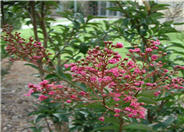
Common name:Crape Myrtle
Botanical name:Lagerstroemia indica
The new leaves of this species are 2" long, bright green, and tinged with bronze. Its fall color is affected by the weather. While it has a bare outline, its rounded seed capsules add interest. Its delicate flowers bloom in 6"-12" long clusters. The colors of its flowers are shades of red, rose, pink, purple, and white. It thrives on heat, and new cultivars have been created that resist mildew.
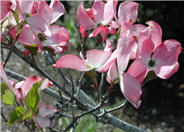
Common name:White Flowering Dogwood
Botanical name:Cornus florida
As a deciduous tree, this dogwood has a rounded form and a horizontal branching pattern. It produces very dense flowering in May as well as in the fall. The fruit appears in clusters of scarlet oval.
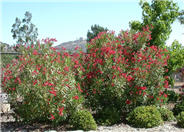
Common name:Oleander
Botanical name:Nerium oleander
Oleander is an evergreen shrub with moderate to fast growth. Leaves are narrow, 4"-12" long, dark green, leathery, glossy, and attractive in all seasons. Flowers are in clusters on branch ends; it blooms from late spring through fall.
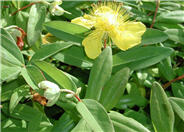
Common name:Creeping St. Johnswort
Botanical name:Hypericum calycinum
Hypericum calycinum is an evergreen perennial. Grows 1' high and 1'-2' in spread, and spreads by underground runners. Produces yellow flowers. This plant is toxic to livestock.
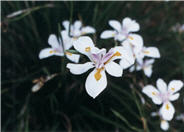
Common name:Butterfly Iris
Botanical name:Dietes vegeta
This clumping evergreen iris bears tall, narrow leaves to 30" tall and white flowers marked purple in the center on stalks to 3' tall. This variety has stiffer, darker foliage than the bicolor form. It requires sun to part shade with little or no summer watering when established. -Monterey Bay Nursery
| Designer: Michael Lander ASLA | Streetside View Waterwise |
Photographer: GardenSoft |
Soils and Compost:
Maintain a two to four inch layer of mulch on the soil surface to reduce weeds, infiltrate rain water, and reduce compaction.
Water Saving Tip:
Apply a layer of mulch around plants to reduce moisture loss.
Choose organic mulches, such as shredded bark, compost or aged sawdust.
Integrated Pest Management:
Attract, or buy beneficial insects such as ladybugs and lacewings to control pest outbreaks in your garden.

